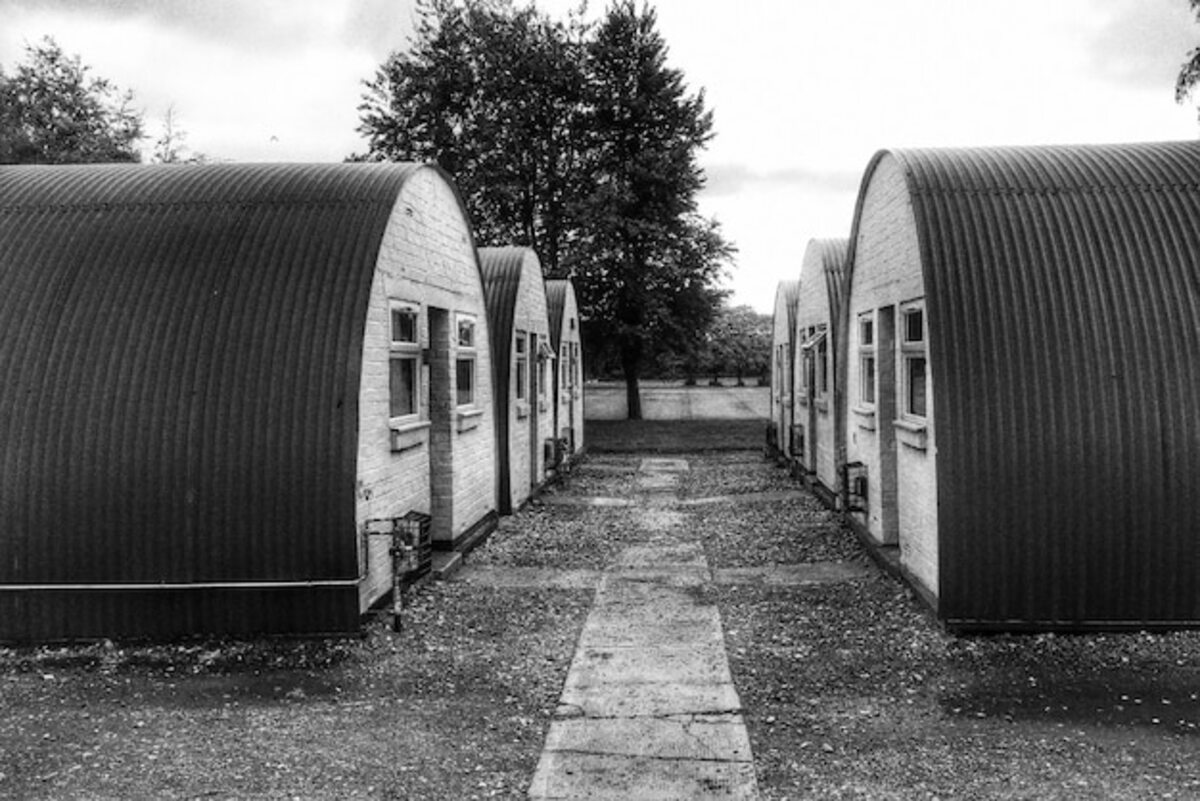Urban refuge: spaces that promote social connection at home

Home is not only a physical refuge but also a space where social connections flourish. In an increasingly urbanized world, designing corners that encourage interaction and a sense of community becomes essential. This article explores how to transform your house into a true urban refuge, where bonds with family and friends are strengthened, creating a warm and welcoming environment that goes beyond four walls. Discover how you can enhance your lifestyle through spaces designed for connection!
1. The importance of shared spaces in the home
The importance of shared spaces in the home lies in their ability to strengthen interpersonal relationships and foster a sense of belonging. In an environment where technology often isolates us, creating areas specifically designed for interaction can make a significant difference. Spaces like spacious dining rooms, cozy living rooms, or even open kitchens invite togetherness, allowing families and friends to gather, share experiences, and build memories together. These moments of connection are fundamental for the emotional and social well-being of all household members.
Shared spaces not only benefit family relationships but can also serve as a bridge to the neighborhood community. By designing accessible and welcoming areas, such as patios or terraces to host friends and neighbors, an inclusive environment is fostered that invites dialogue and collaboration. This can be especially valuable in dense urban settings, where individuals may feel disconnected from one another. Thus, by prioritizing these spaces within the home, not only is the personal environment transformed, but it also contributes to strengthening the broader social fabric surrounding our daily lives.
2. Designing outdoor areas: gardens and terraces as meeting points
In the quest to create an urban refuge that fosters social connection, gardens and terraces emerge as key spaces to gather family and friends. Designing these outdoor areas goes beyond simply adding plants or furniture; it is about establishing an environment conducive to interaction. Incorporating elements such as comfortable benches, spacious tables, and flexible seating can transform a simple terrace into the epicenter of memorable gatherings. Additionally, the inclusion of soft, warm lighting allows enjoyment of the space during the evenings, making each encounter special and inviting.
The intelligent use of vegetation not only beautifies the environment but also creates an ideal microclimate for spending time together. Aromatic plants and colorful flowers can attract pollinators and provide a natural touch that invites relaxation. A well-designed garden can serve as a personal refuge where children play while adults share meaningful conversations. By integrating these outdoor spaces into our daily lives, we not only enrich our social experiences but also cultivate a sense of community amidst the urban bustle.
3. The kitchen as the heart of the home: fostering togetherness
The kitchen has traditionally been considered the heart of the home, and it's not hard to understand why. This space is not only used to prepare food, but it also serves as a gathering point where families come together to share stories, laughter, and meaningful moments. By designing an open kitchen or incorporating a central island, you can encourage interaction between family members or friends while cooking together. The experience of collaborating on meal preparation can become a ritual that strengthens emotional bonds and creates lasting memories.
Additionally, by integrating elements such as an adjacent dining table or comfortable seating areas in the kitchen, conversation is encouraged and a warm, inviting atmosphere is promoted. Consider adding personal touches, such as family photos or decorations that tell your story, to make this space a special refuge where everyone feels welcome. Thus, the kitchen will not just be a place to eat, but a true social hub of the home that fosters togetherness and a sense of community among its inhabitants.
4. Versatile furniture: solutions for small spaces that invite socializing
In the search for a home that invites social connection, versatile furniture plays a key role, especially in small spaces. Opting for multifunctional pieces not only optimizes space usage but also creates environments where interactions flow naturally. Sofas that convert into beds for guests, extendable tables that adapt to intimate gatherings or large celebrations, and stools that can be used as extra seating or side tables are perfect examples of how smart furniture can transform an environment. These elements allow for greater flexibility and facilitate the creation of different configurations according to the occasion.
Additionally, versatile furniture fosters a cozy and dynamic atmosphere. By choosing pieces that can be easily reconfigured, we not only maximize the available space but also create more functional and appealing gathering areas. Imagine a corner with a modular sofa where friends and family can comfortably come together to share moments, or a coffee table with hidden storage that serves both for games and informal dinners. These solutions invite dialogue and strengthen the bonds among those who share the home, turning every gathering into an opportunity to cultivate meaningful and memorable connections.
5. Proper lighting: creating cozy environments for meetings
Lighting plays a fundamental role in creating cozy environments that invite interaction and social connection. A well-lit space not only highlights the colors and textures of the surroundings but also sets the emotional tone for gatherings. Choosing warm and dimmable lights can transform a common room into an intimate refuge where friends and family feel comfortable sharing stories or enjoying a meal. Incorporating different light sources, such as floor lamps, wall sconces, or candles, allows for playing with the atmosphere, adapting to each moment of the day and the type of gathering that one wishes to promote.
Additionally, it is important to consider how to distribute lighting to enhance specific areas of the home. For example, creating focal points over tables or sofas can make these spaces more attractive for gathering. Soft light around a conversation area can encourage people to relax and open up to each other more easily. Likewise, integrating natural elements like plants along with appropriate lighting not only beautifies the environment but also brings warmth and vitality to shared spaces. Thus, each properly lit corner becomes a conducive setting to strengthen those valuable social bonds in the home.
6. Multifunctional spaces: adapting rooms for different social activities
Multifunctional spaces are an ideal solution to maximize the use of every corner of your home, adapting them to different social activities. Instead of having rooms dedicated exclusively to one purpose, like a dining room or a living room, you can transform these areas into versatile spaces that fit the needs of the moment. For example, a living room can become an improvised cinema for a movie night with friends or a collaborative workspace during the day. The key is to select furniture that is easily reconfigurable and decorations that lend themselves to multiple uses, thus creating a dynamic and welcoming environment.
The incorporation of flexible elements, such as modular sofas, folding tables, or mobile shelves, allows each room to evolve according to the occasion. Additionally, adding personal and creative touches —such as local artwork or plants— not only beautifies the spaces but also fosters meaningful conversations among guests. With these adaptations, each social gathering becomes an opportunity to enrich relationships and share unique experiences; thus, your home serves not only as a physical refuge but also as a true social hub where human connections flourish.
7. Incorporating technology: how smart devices can bring us together
Incorporating technology into our home is not just about comfort and efficiency, but also about creating an environment that promotes social connection. Smart devices, from voice assistants to automated lighting systems, can facilitate meaningful interactions. For example, a smart speaker can allow family members to share favorite music or podcasts while cooking together, creating moments of bonding and collective enjoyment. Additionally, communication apps can keep family and friends connected through video calls or interactive games, even when they are physically separated.
The key is to select technologies that encourage interaction rather than distraction. Shared screens in common areas can become the focal point for movie nights or family presentations, where everyone actively participates. Likewise, home automation systems that allow control of lighting and temperature contribute to creating a cozy environment that invites spending time together. In this sense, by integrating smart devices designed to bring us together rather than isolate us, we transform our home into a vibrant urban refuge where every corner is an opportunity to strengthen our social ties.
8. Decoration that invites sharing: visual elements that inspire conversation
The decoration of a home can be a powerful tool to encourage conversation and create meaningful connections among its inhabitants. Visual elements like artworks, family photographs, or travel souvenirs can serve as catalysts for dialogue. By choosing pieces that tell stories or reflect shared interests, we transform every corner into a meeting point where visitors feel comfortable sharing anecdotes and experiences. Integrating these elements not only beautifies the space but also invites friends and family to actively participate in the conversation, thus creating a more dynamic and welcoming environment.
In addition to artworks, furniture also plays a crucial role in creating a decor that invites sharing. Opting for spacious sofas and generous coffee tables allows people to gather without physical constraints. The arrangement of the furniture is equally important; by organizing it in circles or groupings, we promote more natural and fluid interactions among those present. Incorporating interactive elements, such as board games or interesting books in common areas, can be another effective resource to break the ice and spark pleasant conversations. Ultimately, well-thought-out decor not only beautifies the home but also transforms it into a conducive setting for cultivating lasting and memorable relationships.
9. The influence of art on social connection within the home
Art has the power to transform not only spaces but also relationships. In the context of home, artworks can become catalysts for conversation and reflection, fostering deeper interactions among those who share the same space. By displaying pieces that resonate with the cultural or personal identity of the inhabitants, an environment is created where every corner tells a story. This not only invites family members to share their own experiences related to art but also offers visitors a window into the experiences and values of those living in the house.
Additionally, the act of creating art together—whether through painting, sculpture, or any form of artistic expression—can be a rewarding activity that strengthens family and friendship bonds. These shared moments not only generate valuable memories but also promote a sense of collaboration and belonging within the home. By integrating dedicated art spaces in our houses, such as a small studio or an improvised gallery in the living room, a creative environment is fostered where social connection naturally flourishes, turning each gathering into an opportunity to strengthen the family community.
10. Inspiring examples of urban shelters around the world
Urban refuges around the world are inspiring examples of how spaces can be designed to cultivate social connection. From community rooftops in New York that offer shared gardens to interior courtyards in European cities that invite neighbors to enjoy the outdoors, each of these places becomes a setting where human interactions flourish. In these environments, not only is casual meeting between friends and family encouraged, but also the creation of supportive networks that strengthen the social fabric of the community. Another great example is the use of public spaces transformed into recreational areas, as occurs in many metropolises where old factories have been converted into modern cultural centers. These places not only provide a platform for artistic and sports activities but also serve as meeting points where people can share experiences and build meaningful relationships. By observing these global initiatives, we can find inspiration to create our own urban refuges at home, turning every corner into a conducive space for dialogue and coexistence.
Ultimately, examples of urban shelters teach us that thoughtful design can have a profound impact on our daily lives. By incorporating elements that encourage social interaction—such as comfortable common areas or outdoor spaces—we can transform our homes into true sanctuaries of human connection. In this way, we not only enhance our quality of life but also contribute to strengthening the community around us, creating a warmer and more welcoming environment that resonates with the very essence of "home."



